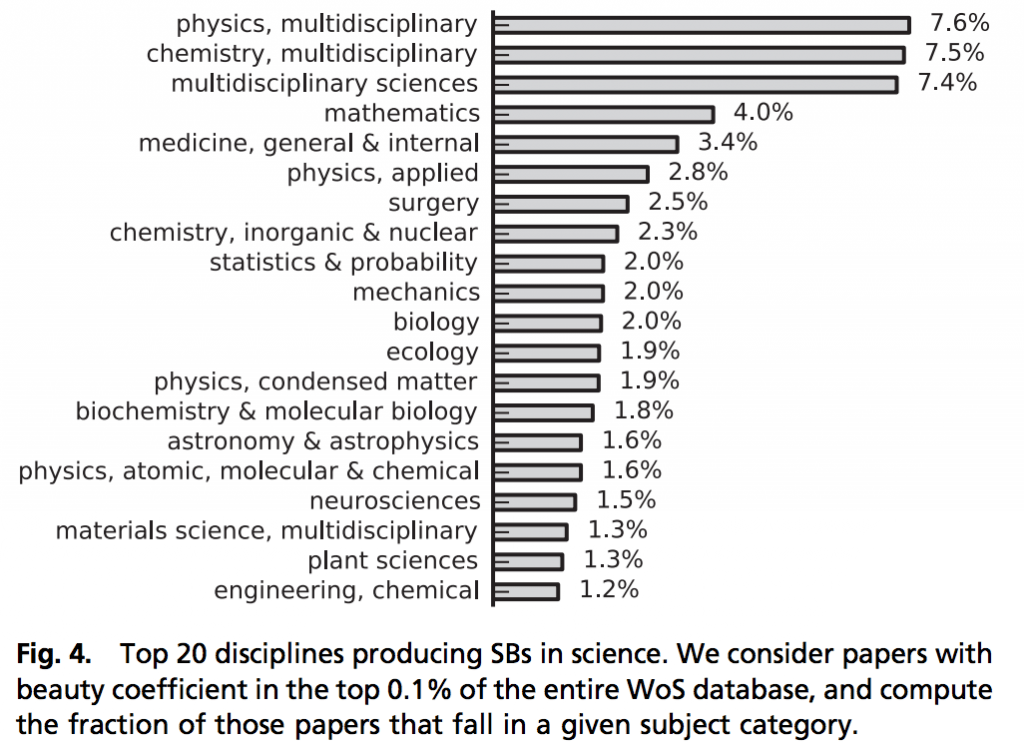Q Ke, E Ferrara, F Radicchi, and A Flammini.
Proceedings of the National Academy of Sciences, 2015
Scientific papers typically have a finite lifetime: their rate to attract citations achieves its maximum a few years after publication, and then steadily declines. Previous studies pointed out the existence of a few blatant exceptions: papers whose relevance has not been recognized for decades, but then suddenly become highly influential and cited. The Einstein, Podolsky, and Rosen “paradox” paper is an exemplar Sleeping Beauty. We study how common Sleeping Beauties are in science. We introduce a quantity that captures both the recognition intensity and the duration of the “sleeping” period, and show that Sleeping Beauties are far from exceptional. The distribution of such quantity is continuous and has power-law behavior, suggesting a common mechanism behind delayed but intense recognition at all scales.
Media Coverage
- ‘Sleeping beauty’ papers slumber for decades – Nature News
- Even Einstein’s Research Can Take Time to Matter – New York Times
- ‘Sleeping beauty’ studies ahead of their time – ABC Science
- Like Sleeping Beauty, some research lies dormant for decades, study finds – Phys.org
- The Dayside : Kissed by a prince – Physics Today
- The Sleeping Beauties of Science – Pacific Standard
- Quando la ricerca è una “bella addormentata” – Le Scienze
- Paper all’avanguardia: fanno il botto decenni dopo la pubblicazione – Oggi Scienza
- ‘Sleeping Beauty’ studies don’t pay off for decades – Futurity
- Sleeping Beauty Research Papers Can Languish For Decades, Even For Albert Einstein
– Tech Times - Like Sleeping Beauty, Some Research Lies Dormant for Decades – News Wise
- El estudio de Einstein que resucitó a los 60 años y otras bellas durmientes – El Pais
- ‘Sleeping Beauty’ Studies Don’t Pay Off for Decades – Epoch Times
- Like Sleeping Beauty, some research lies dormant for decades, IU study finds – Indiana University Newsroom
